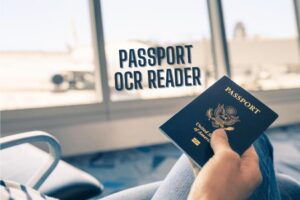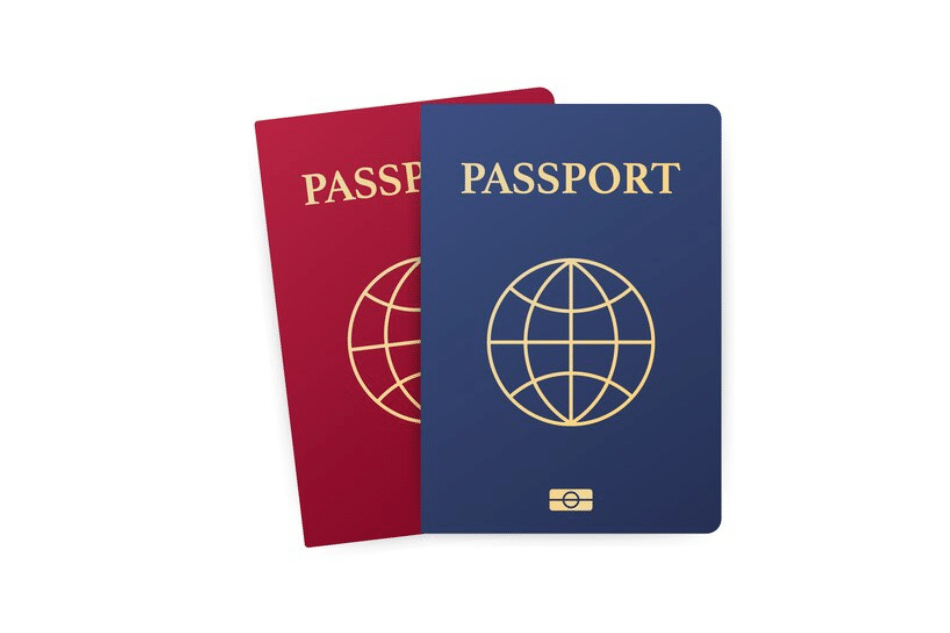Passport recognition technology identifies and processes passport information automatically on digital onboarding. It uses OCR(optical character recognition) to digitize and verify passport data.
Travelers and businesses globally rely on passport recognition systems for efficient identity management and border control processes. This technology streamlines airport check-ins, simplifies immigration procedures, and enhances security measures. By quickly scanning a passport’s machine-readable zone, the technology extracts essential details, allowing for immediate validation against international databases.
Passport recognition tools are integral to improving the speed and accuracy of identity verification, helping to minimize long queues and potential human errors. As such, they’re increasingly adopted in travel, hospitality, and law enforcement sectors, showcasing a commitment to technological innovation in global security and traveler facilitation.
The Importance Of Passport Recognition
Enhancing Travel Efficiency
Fast and accurate passport recognition plays a pivotal role in enhancing the efficiency of travel. With millions of people moving across borders daily, any delay can result in significant bottlenecks. Utilizing state-of-the-art passport scanning and recognition technologies:- Accelerates the processing time at airports and other entry points,
- Reduces long queues, ensuring a smooth transit for travelers,
- Allows for e-gates usage, where eligible passengers can proceed through automated border control swiftly, and
- Enhances customer satisfaction and overall experience at transportation hubs.
Border Security And Verification
Passport recognition is not only about convenience but also plays a crucial role in maintaining high levels of security. Its implementation:- Helps authorities detect fraudulent documents,
- Prevents identity theft through advanced biometric verification systems,
- Enables cross-checking against international watchlists and databases, and
- Supports immigration officers to make informed decisions swiftly.
Streamlining Global Travels

Digital Passport Recognition Technology
Embarking on an international journey often starts with the hassle of documentation verification. Digital Passport Recognition Technology eradicates such bottlenecks, transforming travel into a fluid experience. This sophisticated system employs:- Optical Character Recognition (OCR): Rapidly deciphers personal details from your passport’s data page.
- Advanced Algorithms: Authenticate the document’s validity, diminishing the risk of fraud.
- Seamless Integration: Works in tandem with airline databases and immigration systems for smooth data transition.
Biometric Authentication At Immigration
The proliferation of biometric technology has ushered in a new era of immigration procedures. Biometric Authentication goes beyond traditional methods by utilizing unique physiological attributes. Key features include:| Biometric Feature | Advantages | Usage |
|---|---|---|
| Fingerprint Scans | Quick identification and non-intrusive | Most common at border control checkpoints |
| Facial Recognition | Effortless verification and enhanced security | Increasingly deployed at automated passport control kiosks |
| Iris Scanning | Highly accurate and contactless | Used in high-security areas or pre-approved traveler programs |
Benefits Of Simplified Passport Recognition
Expedited Check-in And Customs Processes
The integration of simplified passport recognition systems at airports has drastically reduced the time it takes for travelers to check in and pass through customs. Rather than queueing for long periods, travelers can now enjoy a swift, frictionless entry, propelling them toward their next adventure or important meeting with ease.- Swift Scanning: Automated passport scanners quickly read and process data, slashing wait times.
- Reduced Queues: With faster processing times, bottlenecks at check-in counters and customs are significantly minimized.
- Improved Staff Efficiency: Airport personnel can allocate more time to handle exceptions and provide service, as routine checks are expedited.
Secure And Reliable Identity Verification
Security remains a paramount concern in international travel. Simplified passport recognition systems leverage advanced technology to ensure authenticity and mitigate the risks associated with counterfeit documents. This technology offers an unobtrusive yet powerful method to safeguard borders and traveler identities. Utilizing features such as biometric matching and embedded chip data verification, these systems boast impressive accuracy, which in turn inspires greater confidence in both travelers and security personnel.| Feature | Benefits |
|---|---|
| Biometric Verification | Crosschecks physical traits with passport data for enhanced security. |
| Chip Data Access | Ensures the information is untampered and aligns with airline and customs databases. |
| Pattern Recognition | Detects fraud by comparing against known passport templates and security features. |
Future Trends In Passport Recognition

Advancements In Mobile Passport Apps
Mobile passport apps are at the forefront of a technological leap in passport recognition, simplifying travel documentation. As smartphones become even more entrenched in our daily lives, these apps are transforming the way travelers carry and present their passport information. They serve as digital gateways, storing critical travel documents securely, and enabling quick sharing of passport data with airport and border officials. Moving forward, expect to see enhanced features, such as:- Automatic updates for visa requirements and travel alerts based on destination
- Integrated travel itinerary management
- Real-time status notifications for immigration clearance and flight boarding
Integration Of Biometric Data With Travel Processes
The fusion of biometric data with travel processes is an emerging trend poised to streamline identification and border control procedures. Facial recognition, fingerprint scanning, and iris recognition are becoming integral components of the passport recognition ecosystem. This integration offers a two-fold benefit:| Enhanced Security | Increased Convenience |
|---|---|
| Biometric data provides an additional layer of verification, limiting the potential for identity fraud. | Travelers experience swifter processing times, as biometrics offer quick and accurate identification. |
Frequently Asked Questions On Passport Recognition
How Do I Know If My Passport Is Valid?
Check your passport’s expiration date located on the data page. Ensure it’s valid beyond your planned travel date, typically for six months.
Can I Travel If My Passport Expires In 3 Months?
Traveling with a passport expiring in three months may be restricted. Check destination country entry requirements, as some require six months validity beyond your planned stay. Renew your passport to avoid travel disruptions.
Do Airlines Require 6 Months of Passport Validity?
Many airlines require that your passport have at least six months of validity beyond your travel dates. Always check the entry requirements of your destination country before booking.
Can A Passport Card Be Used As An ID?
Yes, a passport card serves as a legitimate form of photo identification for domestic travel and entry into federal buildings.
Conclusion
Understanding passport recognition technology is crucial for both security and ease of travel. As systems advance, they promise quicker processing and enhanced safety. Embrace this innovation, always staying informed on its evolution. Remember, staying ahead in passport recognition can ensure a smoother journey for all.


